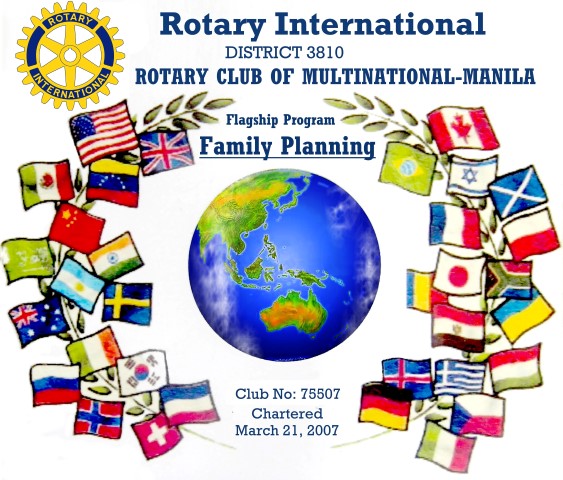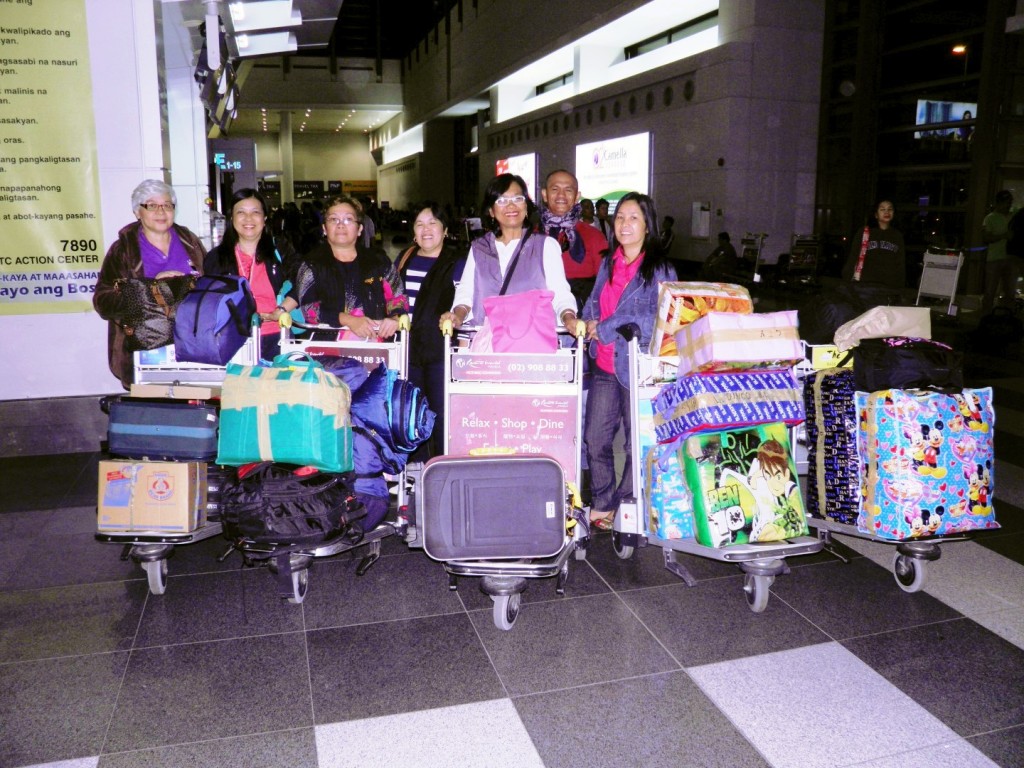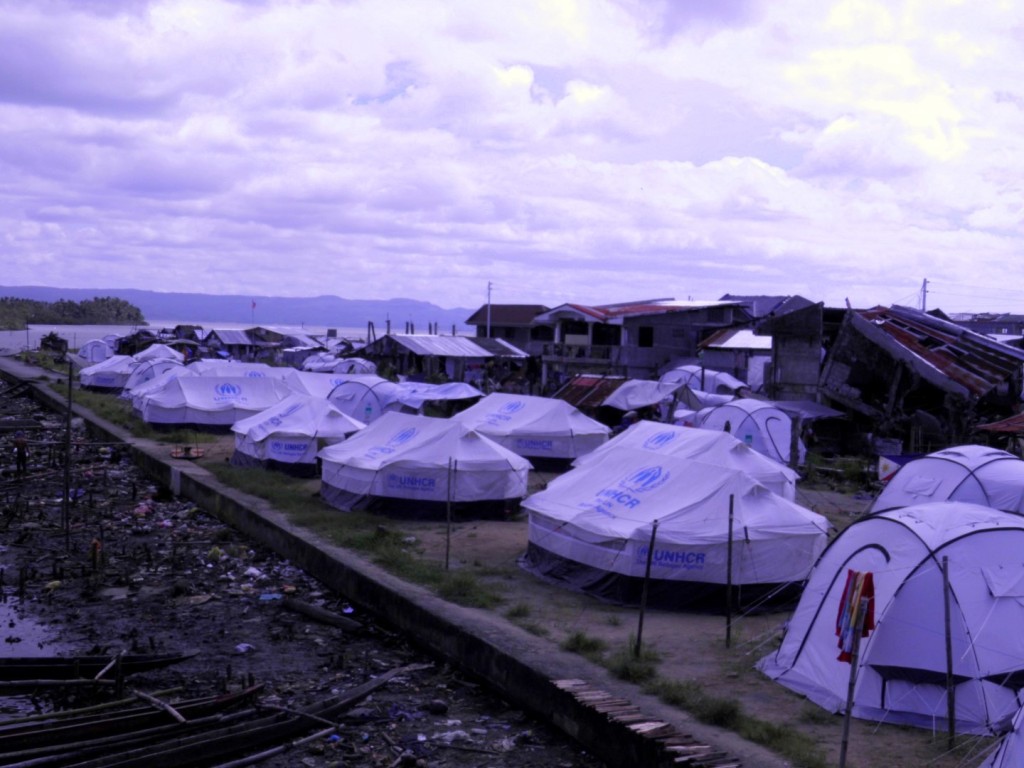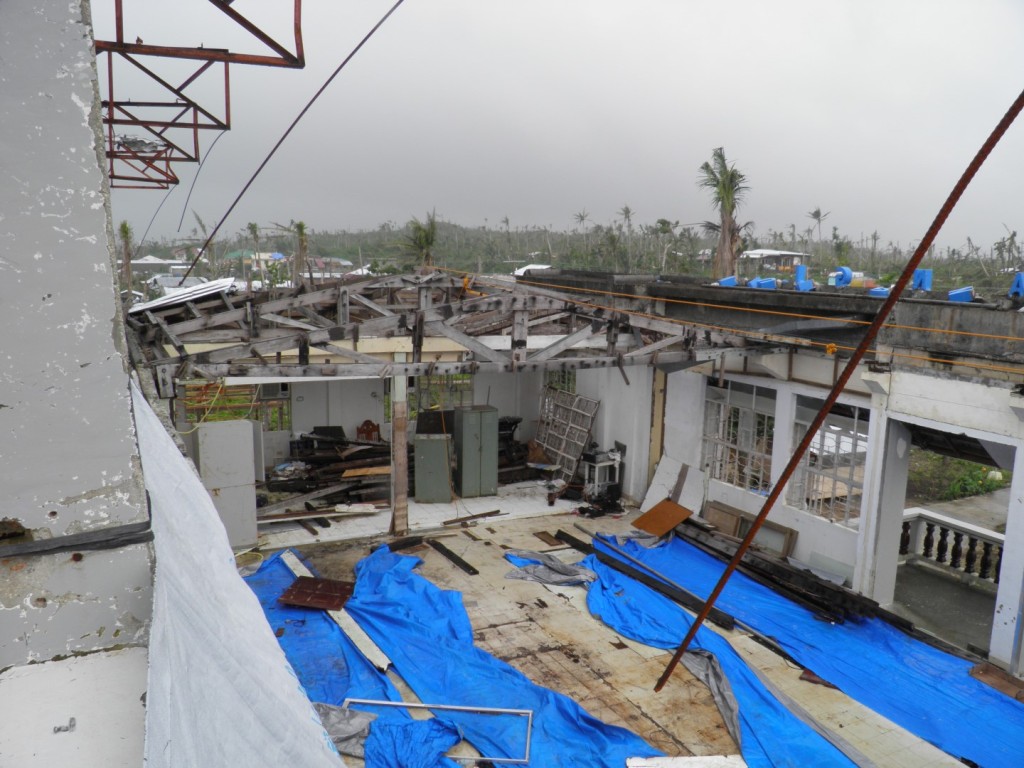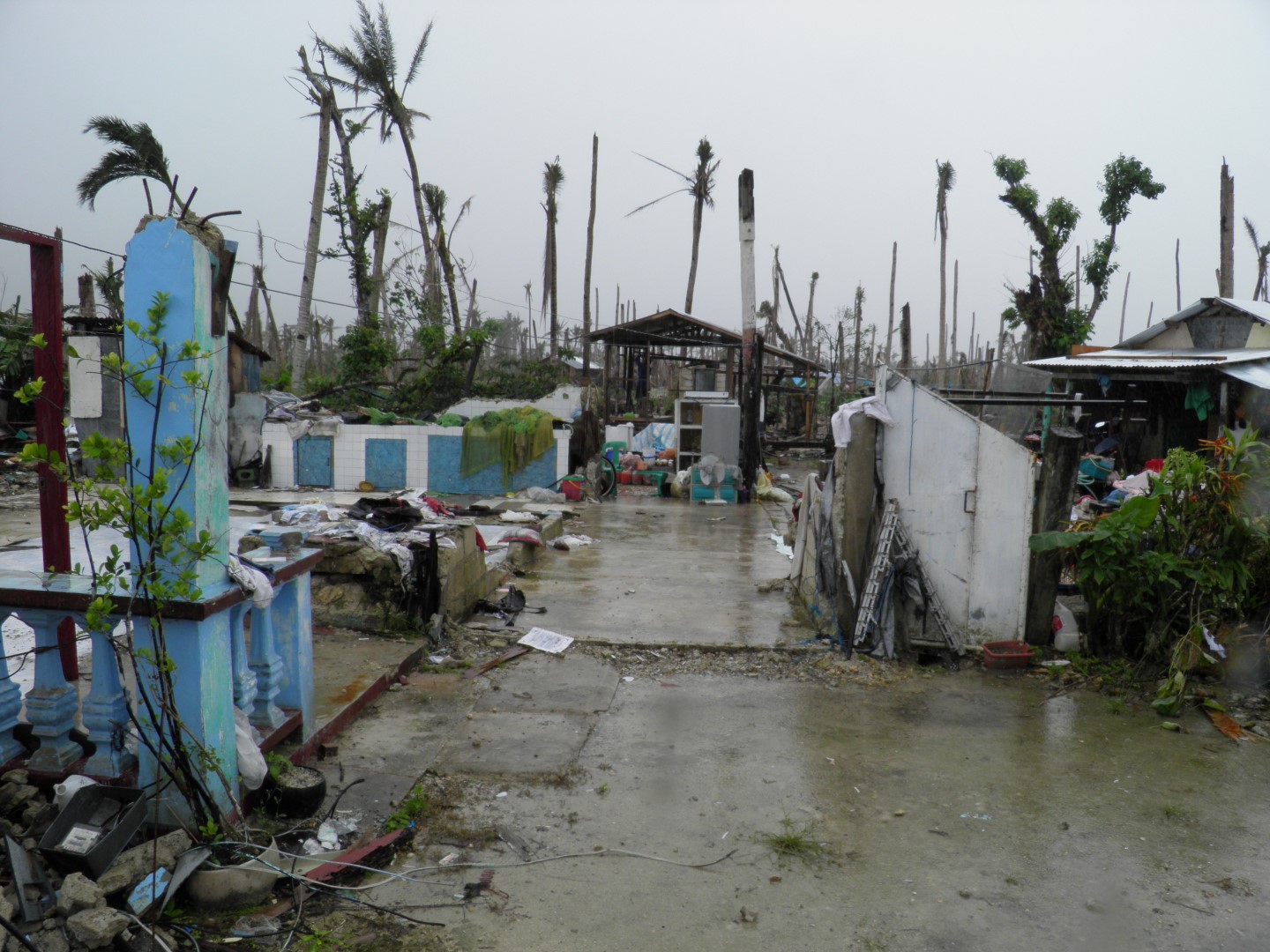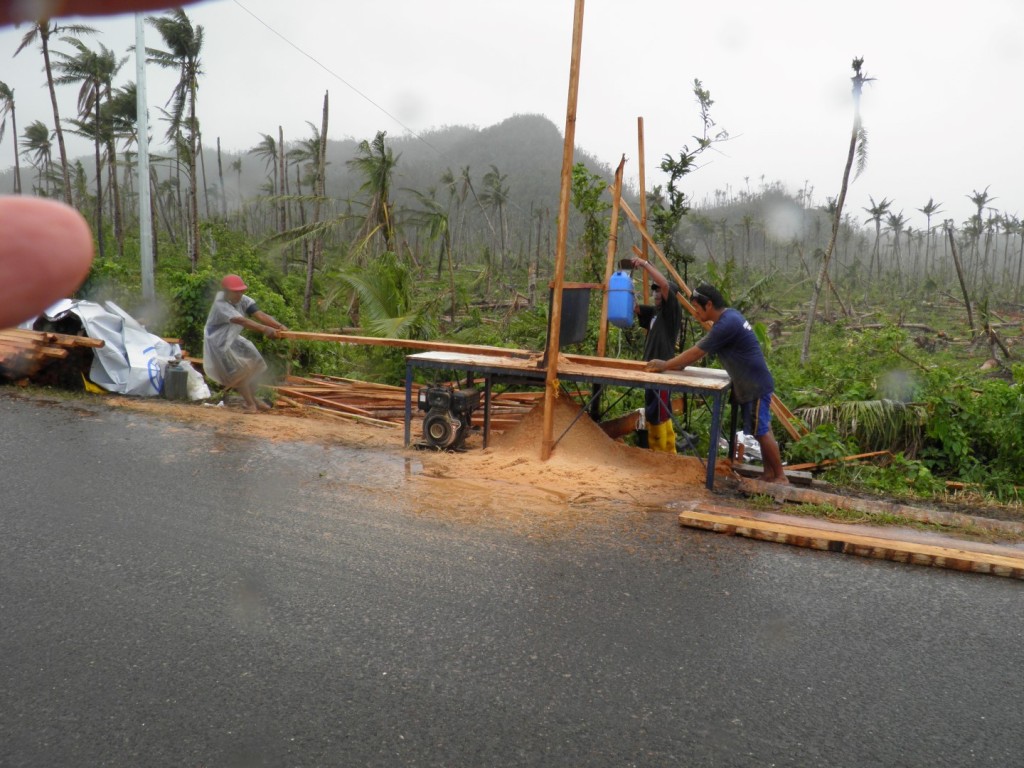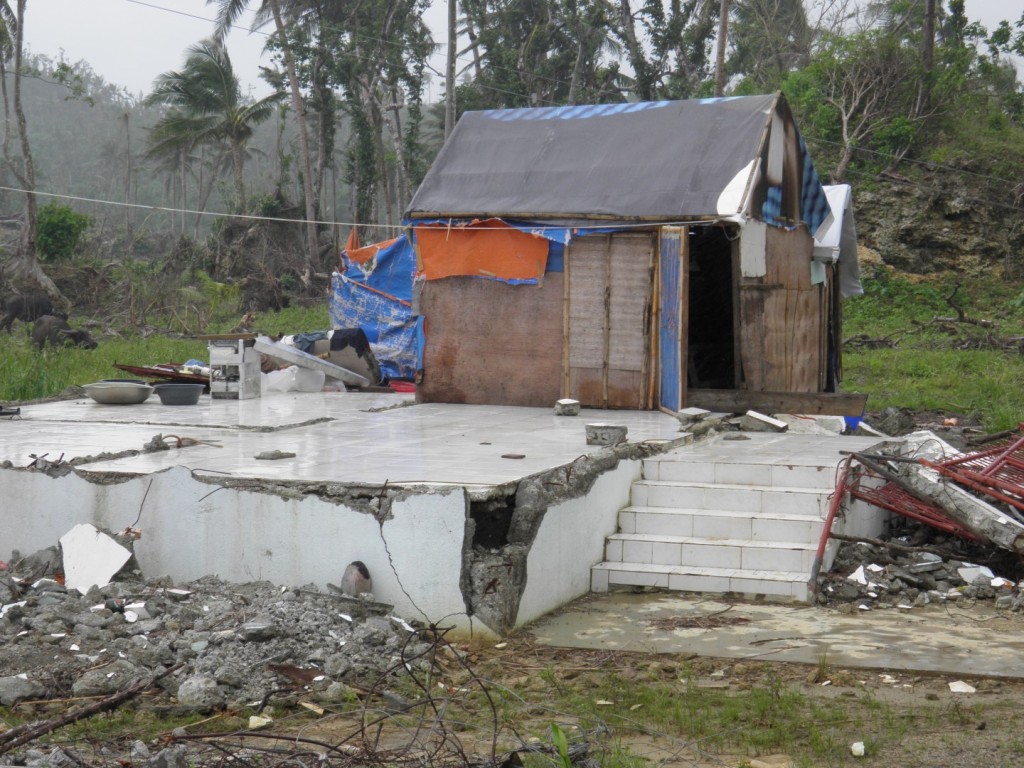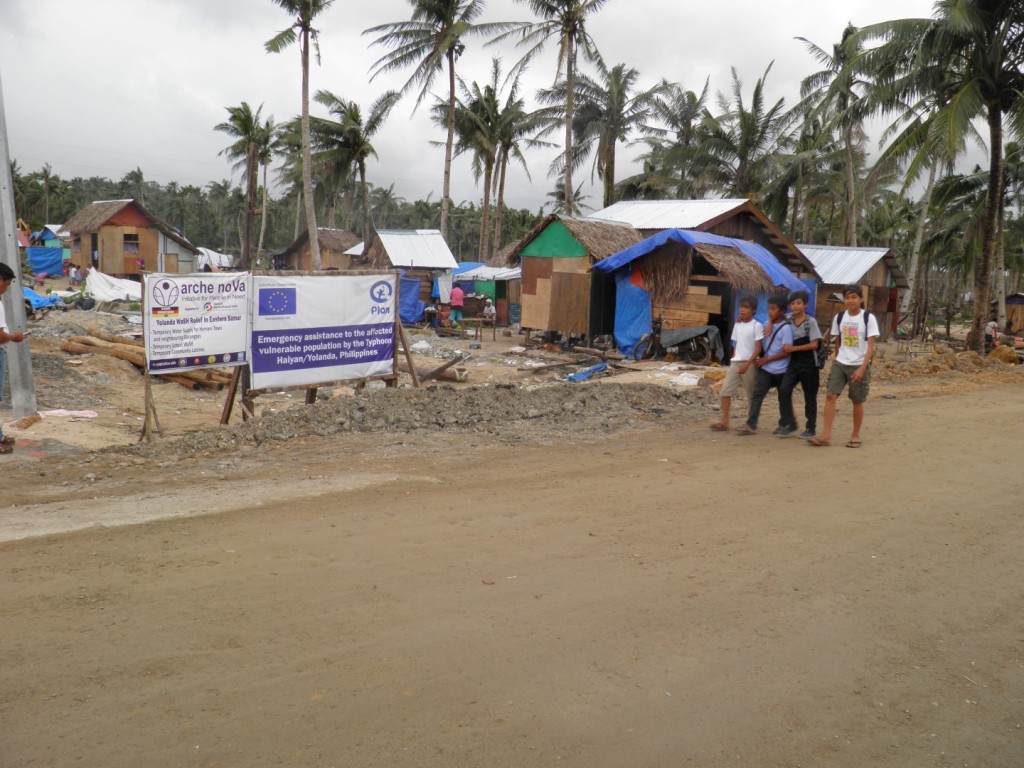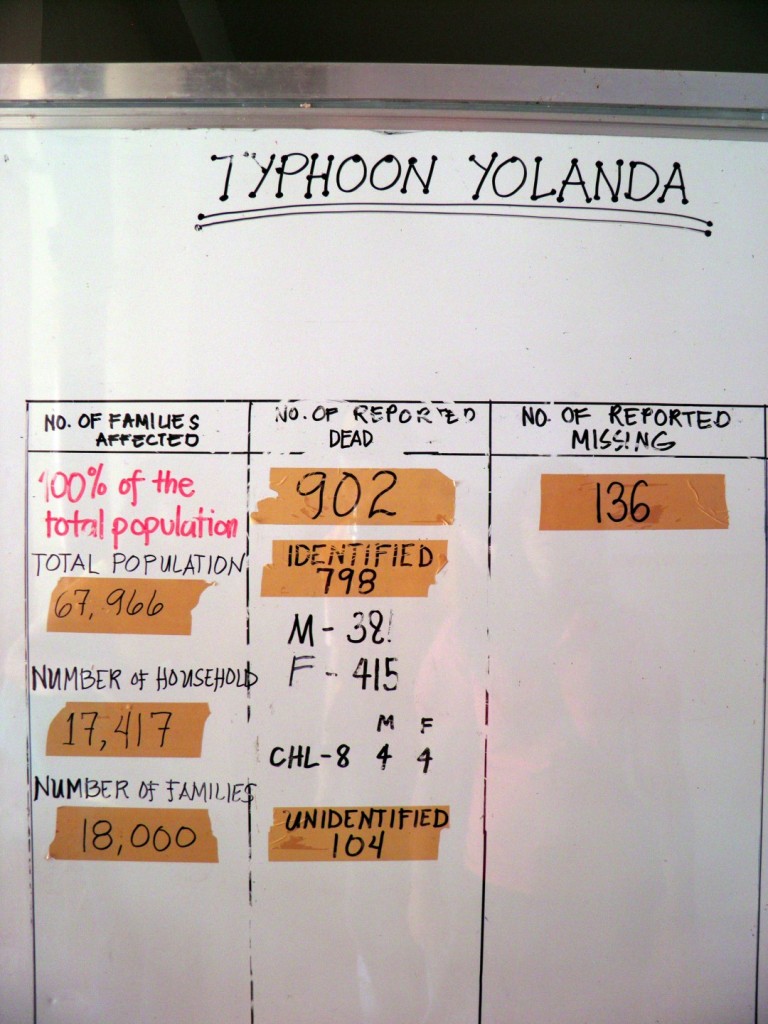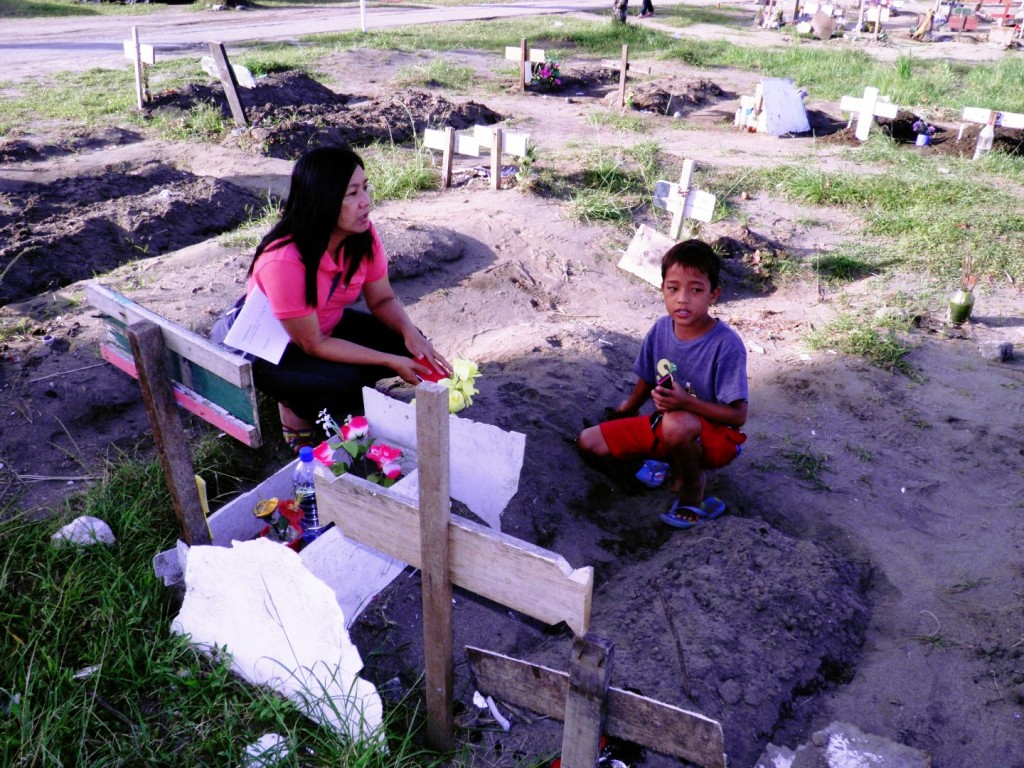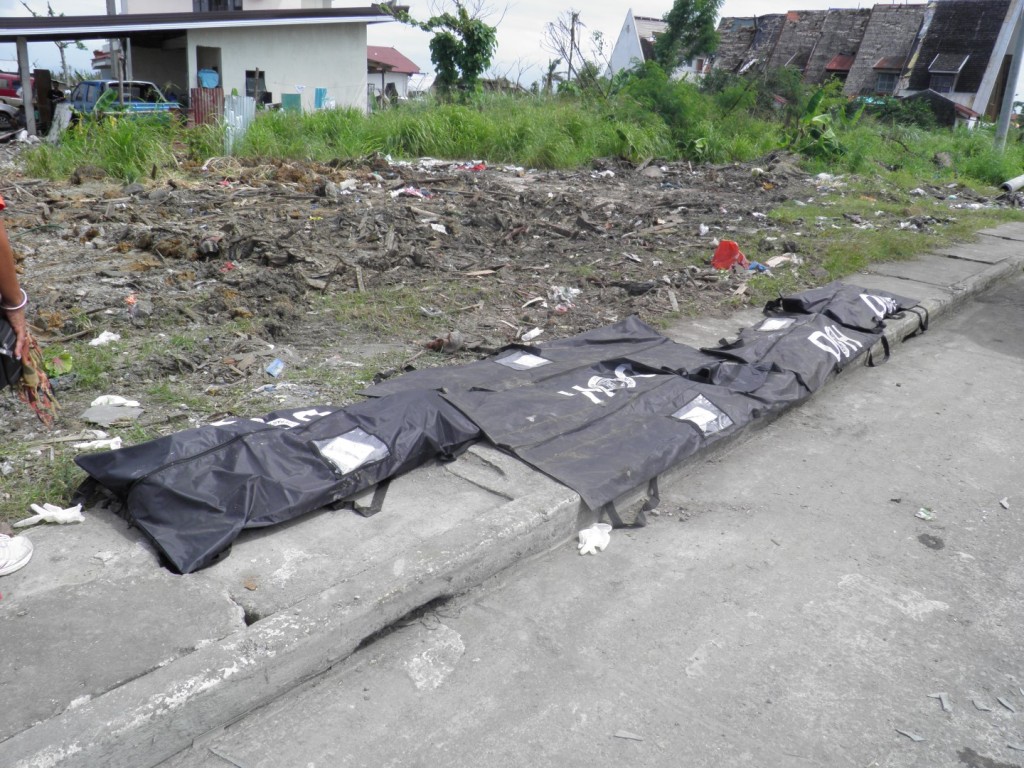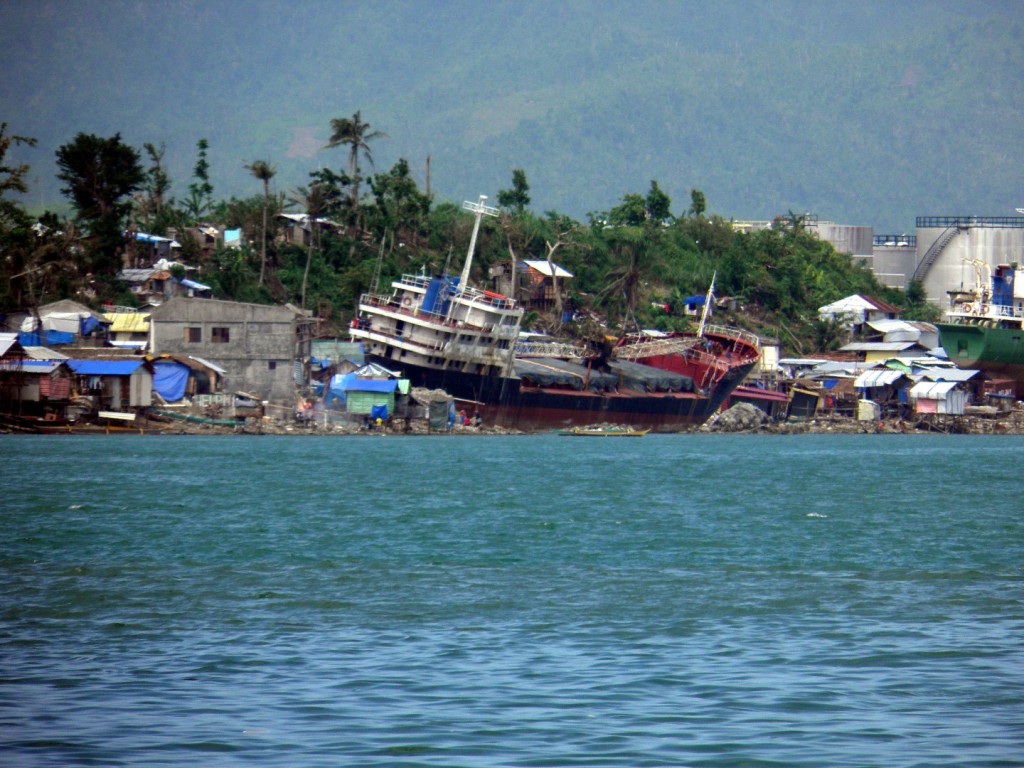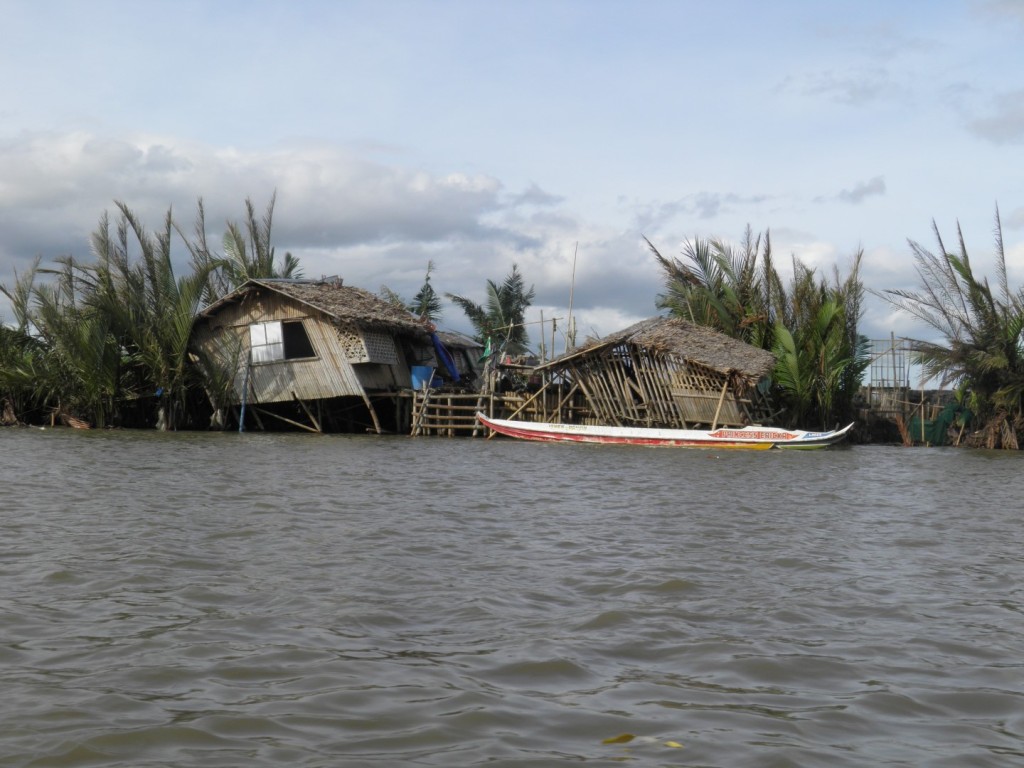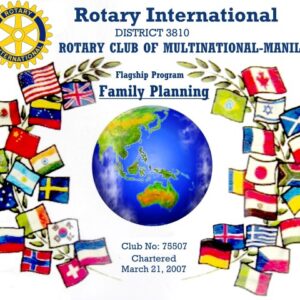The City of Alfonso had collected and had also saved cash donations for the Typhoon Yolanda (Haiyan) survivors and also had leftover presents from its annual Christmas party. Officials from the City as well as DSWD (Department of Social Welfare Development) therefore planned a trip to Samar and Leyte to interview typhoon survivors as to their needs and distribute much needed cash to the most needy parents and toys to the children.
During Multinational Manila’s Jan. 7th club meeting, also attended by a municipal councilor from the city who is also a Rotarian from Ermita, such plans were discussed. Since there were questions about safety and reluctance on the part of City officials to proceed without knowing the area Club Pres. Dr. Klaus was asked and promised to accompany representatives from the City of Alfonso and DSWD for such a trip. He was familiar with the area, having visited it during his club-supported first Typhoon victim support trip Dec. 6-14. This would also give him a chance to continue his research of typhoon damage initiated then.
The four day trip with six ladies inclusive of the treasurer of the City of Alfonso and a security guard took place Jan. 27-30 and started at 3:00am in Alfonso, Cavite. Landing in Tacloban City on Leyte Island after an early morning flight, the group was met at the airport by the prearranged driver with its Hi-Ace van who stood with the group 24-7 in order to assist it with carrying out its mission time-efficiently. It would not have been possible without his thoughtful and dedicated support. The group then immediately proceeded via the San Juanico Bridge from Leyte island to Samar Island and then along the southern part of the western coast of Samar that was also partially destroyed by the typhoon, occasionally stopping along the road to assist needy families.
Traveling along the heavily damaged coast of East Samar, the city of Guiuan, located at the southern tip of Samar, was reached in the afternoon. Guiuan is not so well known and few dignitaries stop here to provide direct typhoon publicity and aid because it has no commercial airport in contrast to Tacloban’s commercial airport. The Guiuan airport with is shorter landing strip was built by American forces during WWII and C-130 military planes fly in the much needed supplies. Fortunately the group was still able to book the last remaining rooms in a partially destroyed pension house or it would have had to sleep overnight in the van (as was necessary during Dr. Klaus’ first trip in December 2013) or travel on.
Initial settlements in Guiuan perhaps occurred largely in the mountain range that still protects parts of the city from storm furies sweeping in form the Pacific Ocean. However, since that time the city greatly expanded so that even ‘evacuation centers` were not safe and largely destroyed throughout the city.
The remainder of the first day and second day were then spent in Guiuan where the typhoon first made landfall and virtually destroyed most of the buildings with great sufferings by people still visible everywhere. Exceptions were reinforced concrete structures whose roofs were blown off and the interior badly damaged by the rains unless they had flat terrace-like concrete roofs. The Church of Immaculate Conception, one of the oldest churches in the Philippines and a well-known landmark, was also destroyed. In addition to cash donations, building supplies such as hammers (only six available in town) and nails of several sizes were also purchased in several hardware stores to assist the men with rebuilding. While the western part of the island facing the Leyte Gulf saw a ‘minimal’ storm surge ocean rise of ‘only’ about 5-6 feet, the eastern part facing the Pacific Ocean and the oncoming typhoon saw a tsunami-like storm surge perhaps as high as 20 feet. It destroyed nearby low-lying fishing villages such as Salcedo and Mercedes as well as fishing villages and towns such as Hernani along the coast of eastern Samar Island, reaching beyond Balangkayan. Unfortunately, the limited time and the heavy destruction within the city and surrounding barangays did not permit the group to also visit the many surrounding island villages also destroyed by the typhoon. The group then travelled during late afternoon of the second day to Mercedes and Salcedo, continuing during the evening north along the eastern Samar Coast. The next day they reversed their trip, driving down the East Samar coast during the third day and visiting heavily damaged sites such as Hernani while also stopping along the way to interview and support families in need.
Arriving at night back in Tacloban on the third day of the trip, the group was fortunate enough to be able to find accommodations again in the inexpensive and partially destroyed pension in which Dr. Klaus stood during his December 2013 trip and where power had been restored. All partially renovated hotels in Tacloban and Palo were fully booked, largely by overseas staff assisting with disaster mitigation and were also charging high prices beyond the budget of the group. The city and surrounding towns, sadly largely unprepared, were heavily damaged by the storm surge created by the typhoon and the storm itself. Situated largely at sea level and facing the bottleneck of the Leyte gulf that can bring storm surges from different directions, the area has faced such disasters before. As posted on November 19th, 2013, on the Internet by Raphael Lotilla, a former Philippine energy secretary, on October 12, 1897 a powerful typhoon took a path similar to Typhoon Yolanda’s Nov. 8, 2013 path. It first made landfall in Guiuan as well as along the lower eastern Samar coast before destroying Tacloban and its surrounding villages. The Tacloban area was described in a scientific paper published soon thereafter by Fr. Jose Algue of the Obervatorio de Manila (El Bagio de Samar y Leyte de Octubre 1897) as a ‘tongue of low-lying land wedged surrounded by mountains`. A similar strong typhoon in November 1912 again destroyed the city of Tacloban and surrounding villages before moving on through the Visayas Sea and also wrecking the sugarcane province of Capiz on Panay Island. During the Nov 8th, 2013 storm surges the entire floor of the landmark Tacloban City Convention Center that faces the ocean directly and also served as evacuation center was quickly submerged by the storm surge. Many people were caught unprepared and by surprise and subsequently drowned or were injured. Along the ocean front within the city itself entire shanty towns were also swept away along with their inhabitants.
The fourth day the group vacated their Palo hotel by 5:00am for a breakfast at a nearby eatery and set out by 6:00am to Barangay San Joaquin in the City of Palo. It had suffered the most casualties of any barangay (village) in the area with over 730 dead and many still missing. The remaining cash of ₱82,000 were distributed by the dedicated Alfonso ladies along with their remaining toys and school supplies donated to RI Multinational Manila from its overseas Japanese guests. The hundreds of small pocket mirrors distributed by the club during the trip along with combs supplied by the City of Alfonso and DSWD were most sought after by the indigent girls and ladies, many of which did not even own a comb, much less a mirror. The tiny plastic toy cars distributed from the club also delighted the small boys. Destitute women, often ‘destined` to act as baby factories, and their children are the true victims of poverty even before ‘natural’ disasters strike.
The ladies from the City of Alfonso continued interviewing destitute families and listened to their heart-breaking stories of often endless suffering. What can one say to the woman who woke up bruised and banged up in the hills above Palo several kilometers from her home after the storm surge swept over her village. Walking back in a daze searching for her home and family she was confronted by total destruction with virtually everyone missing or dead. Now she rests at the makeshift graveyard looking at the many crosses of her family members inclusive her two sons for whom she had sacrificed everything in supporting them to attain a high school diploma. To her money is meaningless anymore. In the meantime Dr. Klaus, in order to mitigate such future suffering as per the club’s mandate, continued the visits of municipal health centers such as Palo to review the Philippine Department of Health family planning mandate, provide contraceptive lady pills if in short supply, and pledge further support as needed as long as the club’s fund last that have been earmarked for this purpose while additional donations are sought.
A quick tour of core devastated areas of the City of Tacloban finished the heart-breaking journey along with further research carried out by Dr. Klaus on building construction. After accompanying the group back on their safe flight to Manila Klaus continued on to Panay Island and the Roxas City area in support of a relocation project for fisher folk families from storm-devastated intertidal small islands in the vicinity of Pontevedra that RI Multinational Manila had initiated during his first trip there in December 2013.
At the request of the City of Alfonso travel arrangements for the tour, inclusive of airfare, had been done by RI Multinational Manila. Window seats were always booked if available so that everyone could see and appreciate the fragile beauty of their country from the air. Seeing destroyed Palo, adjacent Tacloban, the San Juanico Bridge, parts of the west and east coasts of Samar as well as the inspiring Mayon Volcano on the island of Luzon from the air before landing in Manila with its many depressing ‘slum cities` and taking photographs from above were also truly unforgettable memories.
